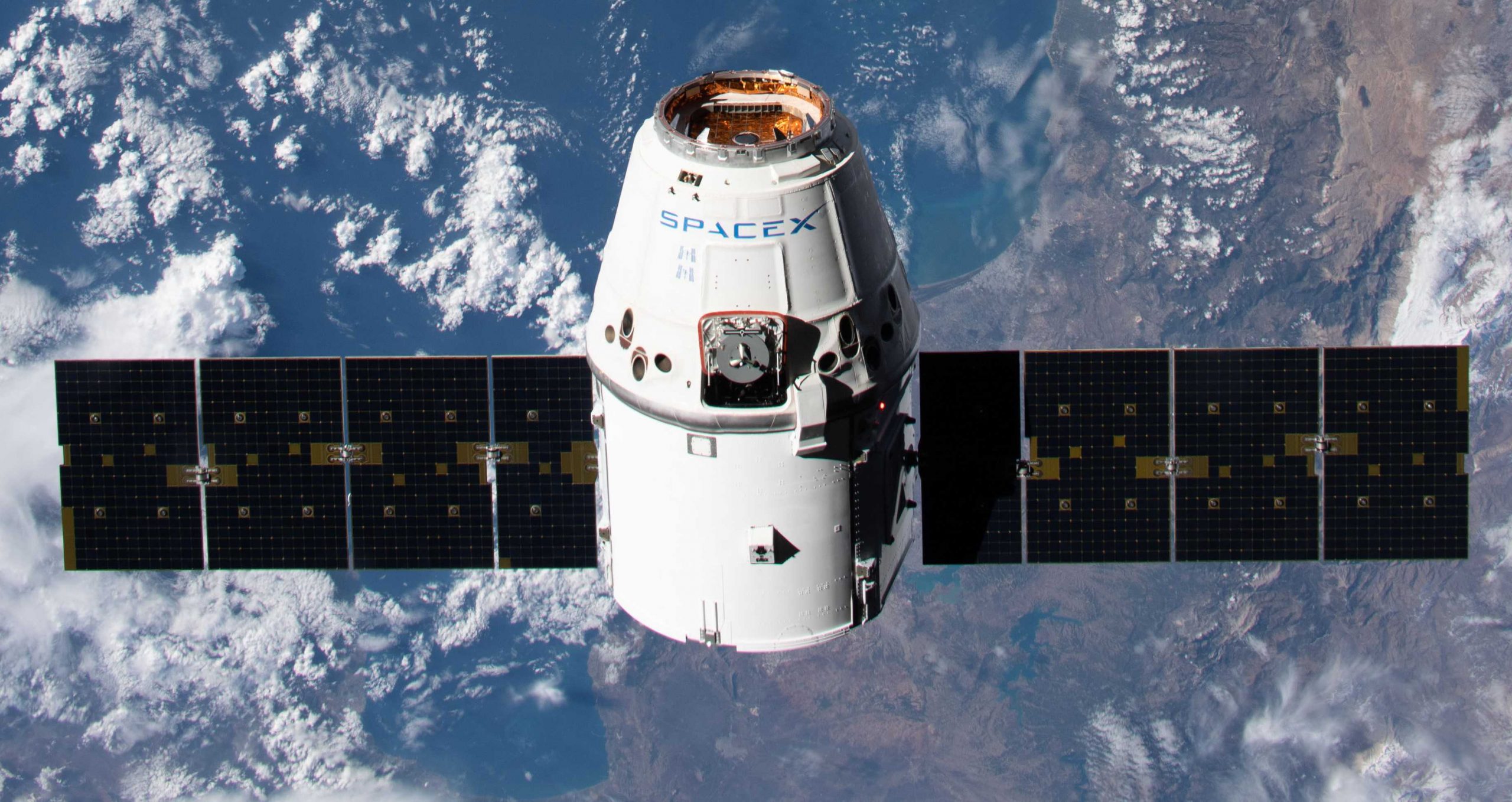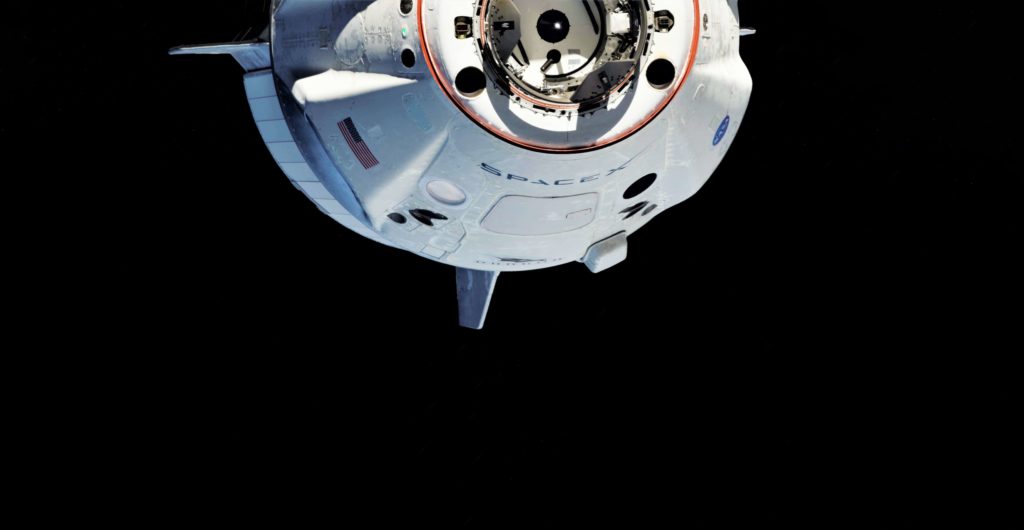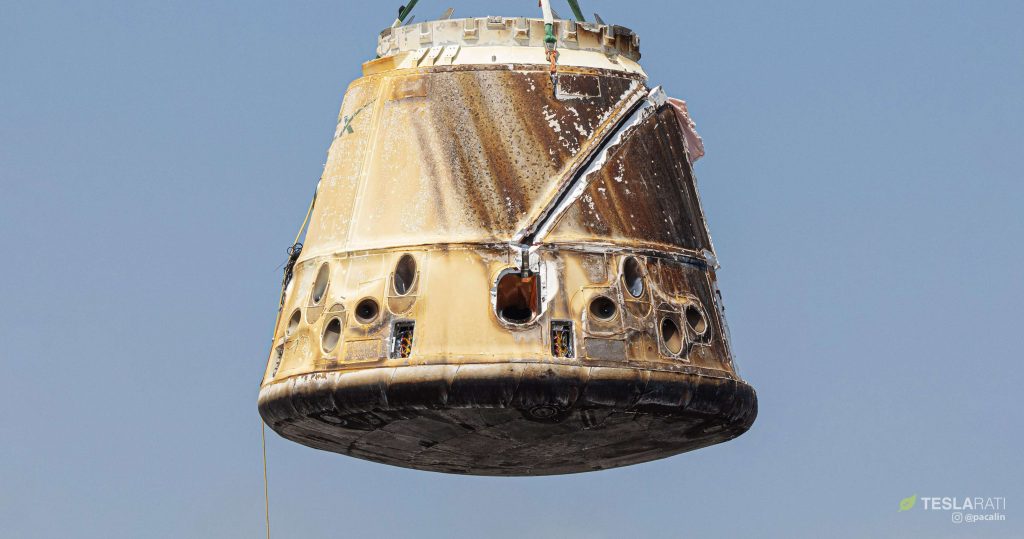

News
SpaceX Cargo Dragon spacecraft arrives at space station on second to last mission
SpaceX’s Cargo Dragon has successfully rendezvoused with the International Space Station (ISS) as part of NASA’s CRS-19 resupply mission, marking what is almost certainly the spacecraft’s second to last orbital launch.
On December 5th, new Falcon 9 booster B1059 lifted off from SpaceX’s LC-40 Cape Canaveral Air Force Station (CCAFS) launch pad with a fresh upper stage and twice flown Cargo Dragon capsule C106 atop it. A little over nine minutes after launch, B1059 prepared to be robotically secured on drone ship Of Course I Still Love You (OCISLY) while Cargo Dragon – now in orbit – separated from Falcon 9’s upper stage and headed on its merry way.
Cargo Dragon’s 20th orbital mission and 19th trip to the ISS, CRS-19’s twice-flown spacecraft commanded the deployment of its two solar arrays, primed its Draco maneuvering thrusters, and opened up its Guidance, Navigation, and Control (GNC) bay. Using star trackers, inertial measurement devices, and lasers, Dragon then proceeded to precisely deliver itself to the ‘door’ of the space station before gradually approaching.
Astronauts aboard the ISS then manually guided Canadarm2 – a massive robotic arm externally attached to the space station – towards Cargo Dragon as it used its thrusters to essentially hover in place, ultimately grabbing the spacecraft with a sort of mechanical hand. At that point, Dragon effectively became a part of the ISS and astronauts monitored the subsequent (and mostly automated) process of using Canadarm2 to fully berth spacecraft with the station.
After berthing, astronauts are able to equalize the pressure between the ISS and visiting spacecraft and open the hatch, gaining access to whatever cargo it was loaded with prior to launch. Alternatively, visiting vehicles can also dock with the International Space Station, a process controlled entirely by the arriving spacecraft, a bit like berthing but with almost all of the risk on its shoulders. All Russian spacecraft currently use this method, as do Boeing’s Starliner and SpaceX’s Crew Dragon.

As it turns out, CRS-19 – partially hinted at in the name – is the second to last launch of SpaceX’s Dragon 1 (Cargo Dragon), which become the first commercial spacecraft capable of reentering Earth’s atmosphere in 2010 and rendezvousing with a space station in 2012. Five months later, SpaceX launched CRS-1 – its first operational resupply mission – and the rest is (more or less) history.
In the seven years since CRS-1, Cargo Dragon – including CRS-19 – has now flown 18 successful space station resupply missions and delivered more than 90,000 lb (50,000 kg) to its ever-changing crew of astronauts. Cargo Dragon has undergone at least two significant upgrades and suffered its fair share of mishaps, but has still successfully completed its mission every time it reached orbit.


NASA’s CRS1 SpaceX contract ultimately called for a total of 20 Cargo Dragon missions to the ISS, although more could technically be added retroactively if both entities were to decide they were needed. Currently, the plan is for CRS-20 – Cargo Dragon’s next launch – to be the spacecraft’s last orbital mission and is scheduled no earlier than March 2020.
After CRS-20, SpaceX – via its subsequent CRS2 NASA contract – means to introduce a version of Crew Dragon (Dragon 2) modified for cargo-only missions, optimally taking flight-proven Crew capsules and reusing them as Cargo Dragon 2s.

SpaceX recently revealed that the first Cargo Dragon 2 spacecraft will unexpectedly not feature Crew Dragon’s complex SuperDraco abort system, a feature that has recently created several roadblocks. However, this dramatically simplifies Dragon 2 and means that SpaceX is still quite confident that the upgraded cargo spacecraft will be ready for its launch debut next year.
Known as CRS-21, that mission will see SpaceX’s CRS launches move from LC-40 to Kennedy Space Center’s LC-39A pad in order to enable extremely late and convenient cargo-loading via Pad 39A’s Crew Access Arm (CAA), to be primarily used by astronauts boarding Crew Dragon. Similarly, Cargo Dragon 2 will dock with the ISS instead of using Dragon’s current berthing route, nominally requiring less hands-on astronaut time for each resupply mission.
Cargo Dragon will be missed but will forever remain a major piece of commercial spaceflight history. Dragon 2 will likely toe the line for the first half of the next decade, but SpaceX ultimately wants to get its generation Starship launch vehicle online as soon as possible – a feat that will make all Falcon and Dragon vehicles redundant if things go as planned.
Check out Teslarati’s newsletters for prompt updates, on-the-ground perspectives, and unique glimpses of SpaceX’s rocket launch and recovery processes.

News
Tesla starts showing how FSD will change lives in Europe
Local officials tested the system on narrow country roads and were impressed by FSD’s smooth, human-like driving, with some calling the service a game-changer for everyday life in areas that are far from urban centers.

Tesla has launched Europe’s first public shuttle service using Full Self-Driving (Supervised) in the rural Eifelkreis Bitburg-Prüm region of Germany, demonstrating how the technology can restore independence and mobility for people who struggle with limited transport options.
Local officials tested the system on narrow country roads and were impressed by FSD’s smooth, human-like driving, with some calling the service a game-changer for everyday life in areas that are far from urban centers.
Officials see real impact on rural residents
Arzfeld Mayor Johannes Kuhl and District Administrator Andreas Kruppert personally tested the Tesla shuttle service. This allowed them to see just how well FSD navigated winding lanes and rural roads confidently. Kruppert said, “Autonomous driving sounds like science fiction to many, but we simply see here that it works totally well in rural regions too.” Kuhl, for his part, also noted that FSD “feels like a very experienced driver.”
The pilot complements the area’s “Citizen Bus” program, which provides on-demand rides for elderly residents who can no longer drive themselves. Tesla Europe shared a video of a demonstration of the service, highlighting how FSD gives people their freedom back, even in places where public transport is not as prevalent.
What the Ministry for Economic Affairs and Transport says
Rhineland-Palatinate’s Minister Daniela Schmitt supported the project, praising the collaboration that made this “first of its kind in Europe” possible. As per the ministry, the rural rollout for the service shows FSD’s potential beyond major cities, and it delivers tangible benefits like grocery runs, doctor visits, and social connections for isolated residents.
“Reliable and flexible mobility is especially vital in rural areas. With the launch of a shuttle service using self-driving vehicles (FSD supervised) by Tesla in the Eifelkreis Bitburg-Prüm, an innovative pilot project is now getting underway that complements local community bus services. It is the first project of its kind in Europe.
“The result is a real gain for rural mobility: greater accessibility, more flexibility and tangible benefits for everyday life. A strong signal for innovation, cooperation and future-oriented mobility beyond urban centers,” the ministry wrote in a LinkedIn post.
News
Tesla China quietly posts Robotaxi-related job listing
Tesla China is currently seeking a Low Voltage Electrical Engineer to work on circuit board design for the company’s autonomous vehicles.

Tesla has posted a new job listing in Shanghai explicitly tied to its Robotaxi program, fueling speculation that the company is preparing to launch its dedicated autonomous ride-hailing service in China.
As noted in the listing, Tesla China is currently seeking a Low Voltage Electrical Engineer to work on circuit board design for the company’s autonomous vehicles.
Robotaxi-specific role
The listing, which was shared on social media platform X by industry watcher @tslaming, suggested that Tesla China is looking to fill the role urgently. The job listing itself specifically mentions that the person hired for the role will be working on the Low Voltage Hardware team, which would design the circuit boards that would serve as the nervous system of the Robotaxi.
Key tasks for the role, as indicated in the job listing, include collaboration with PCB layout, firmware, mechanical, program management, and validation teams, among other responsibilities. The role is based in Shanghai.
China Robotaxi launch
China represents a massive potential market for robotaxis, with its dense urban centers and supportive policies in select cities. Tesla has limited permission to roll out FSD in the country, though despite this, its vehicles have been hailed as among the best in the market when it comes to autonomous features. So far, at least, it appears that China supports Tesla’s FSD and Robotaxi rollout.
This was hinted at in November, when Tesla brought the Cybercab to the 8th China International Import Expo (CIIE) in Shanghai, marking the first time that the autonomous two-seater was brought to the Asia-Pacific region. The vehicle, despite not having a release date in China, received a significant amount of interest among the event’s attendees.
Elon Musk
Elon Musk and Tesla AI Director share insights after empty driver seat Robotaxi rides
The executives’ unoccupied tests hint at the rapid progress of Tesla’s unsupervised Robotaxi efforts.

Tesla CEO Elon Musk and AI Director Ashok Elluswamy celebrated Christmas Eve by sharing personal experiences with Robotaxi vehicles that had no safety monitor or occupant in the driver’s seat. Musk described the system’s “perfect driving” around Austin, while Elluswamy posted video from the back seat, calling it “an amazing experience.”
The executives’ unoccupied tests hint at the rapid progress of Tesla’s unsupervised Robotaxi efforts.
Elon and Ashok’s firsthand Robotaxi insights
Prior to Musk and the Tesla AI Director’s posts, sightings of unmanned Teslas navigating public roads were widely shared on social media. One such vehicle was spotted in Austin, Texas, which Elon Musk acknowleged by stating that “Testing is underway with no occupants in the car.”
Based on his Christmas Eve post, Musk seemed to have tested an unmanned Tesla himself. “A Tesla with no safety monitor in the car and me sitting in the passenger seat took me all around Austin on Sunday with perfect driving,” Musk wrote in his post.
Elluswamy responded with a 2-minute video showing himself in the rear of an unmanned Tesla. The video featured the vehicle’s empty front seats, as well as its smooth handling through real-world traffic. He captioned his video with the words, “It’s an amazing experience!”
Towards Unsupervised operations
During an xAI Hackathon earlier this month, Elon Musk mentioned that Tesla owed be removing Safety Monitors from its Robotaxis in Austin in just three weeks. “Unsupervised is pretty much solved at this point. So there will be Tesla Robotaxis operating in Austin with no one in them. Not even anyone in the passenger seat in about three weeks,” he said. Musk echoed similar estimates at the 2025 Annual Shareholder Meeting and the Q3 2025 earnings call.
Considering the insights that were posted Musk and Elluswamy, it does appear that Tesla is working hard towards operating its Robotaxis with no safety monitors. This is quite impressive considering that the service was launched just earlier this year.








